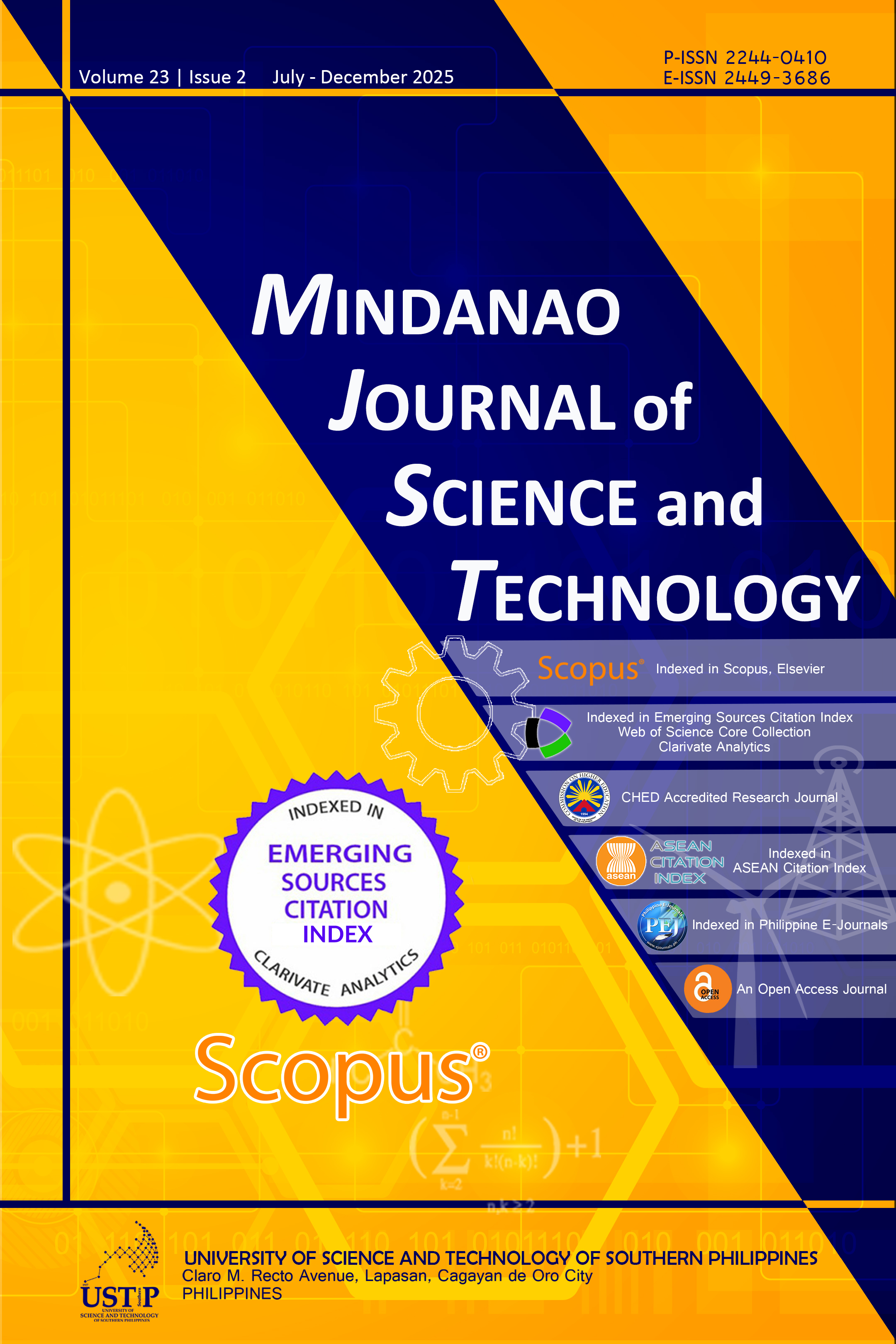Extraction of Low-methoxyl Pectin from Mango Peels for Immobilization of Cellulase
DOI:
https://doi.org/10.61310/mjst.v23i2.2483Keywords:
enzyme activity, immobilized cellulase, immobilization efficiency, leakage, low-methoxyl pectinAbstract
Cellulase has gained interest from an industrial standpoint due to its numerous applications. The immobilization of cellulase makes it possible to repeatedly employ it under various conditions and maintain its activity while using low-cost support materials such as pectin. This study determined the effects of calcium chloride concentration (2.0, 4.0, and 6.0% w/v) and curing time (10, 20, and 30 minutes) on the bead characteristics and enzyme activity of the immobilized cellulase. Low-methoxyl pectin from mango peels was used specifically as a support material. It was extracted using an acid-catalyzed simultaneous extraction and de-esterification technique over 65 hours at 50°C, pH 1.5, and precipitated with ethanol. The results show that cellulase can be immobilized with low-methoxyl pectin and that its immobilization efficiency in all CaCl2 concentrations decreases as curing time increases, where a CaCl2 concentration of 2.0% w/v at 10 minutes yields the best results, which had an immobilization efficiency of 93.14 ± 7.87. The beads formed were not spherical, as they had a sphericity factor greater than 0.05, and their moisture content decreased as the CaCl2 concentration increased from 90.92 ± 0.0023 to 87.90 ± 0.0020%. The leakage, when tested at different periods (0, 30, 60, 90, and 120 minutes) under ambient temperature and pressure, was then determined to be relatively low—in a range of 13.3 ± 0.031 to 17.2 ± 0.21%, where the initial burst of leakage may be a result of cellulase leakage on the bead surface.










